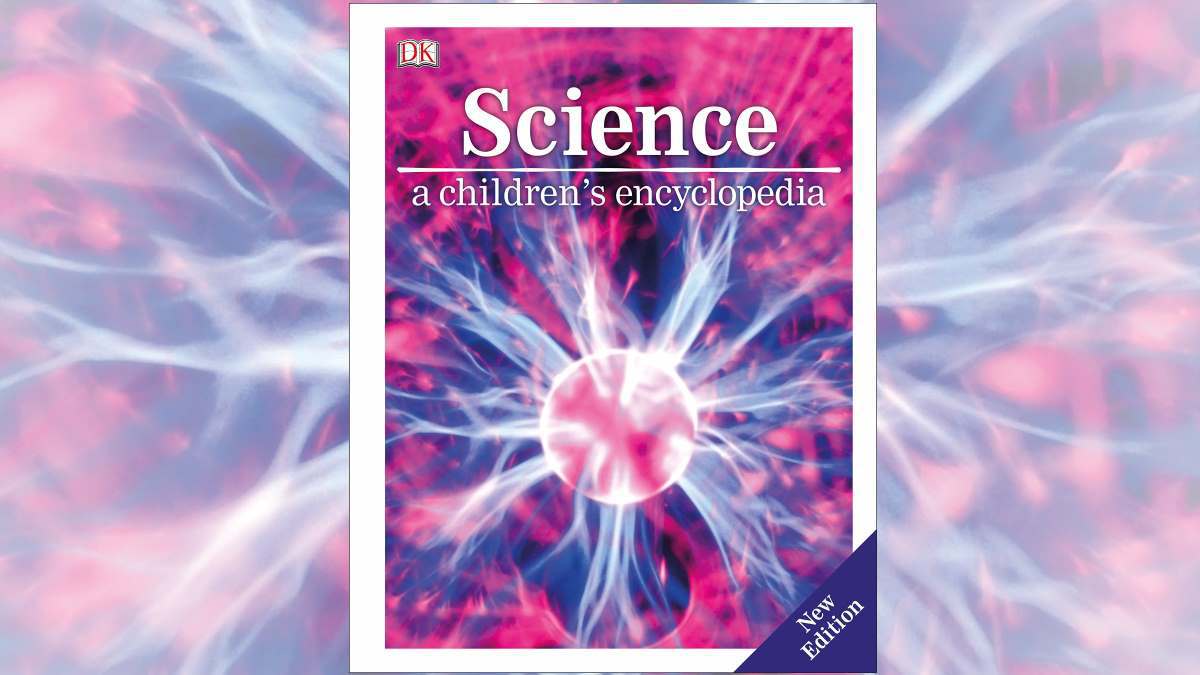 The original idea of Word Wednesday was to use a different word each week, avoiding repetition. As a result, I’m a little reluctant to choose as obvious a word as “science.”
The original idea of Word Wednesday was to use a different word each week, avoiding repetition. As a result, I’m a little reluctant to choose as obvious a word as “science.”
Unfortunately, a book called Science: a Children’s Encyclopedia doesn’t really give me anywhere to go. As a result…
This Week’s Word Is “Science.”
If any book was going to take such a defining GeekDad Word Wednesday word as “science,” it was likely to be one by DK. They’re a constant presence in my columns and, in my opinion, the benchmark of educational science books. This one in no exception.
What Is Science: A Children’s Encyclopedia?
A companion volume to the already reviewed Inventions: A Children’s Encyclopedia, this book contains everything that a child, aged 9 upwards, might want to know about science. As ever, for a DK book, it presents the information in an accessible fashion with great informative text and splendiferous photographs. The book is an updated version of the first edition, published in 2014.
The book is broken down into seven color-coded sections.
Matter
What the universe is made of. The definition of matter and particles, with simplified atomic structure. Molecules, solids, liquids, gases, and changing between states. The Periodic Table and an overview of key elements can all be found in the Matter section.
Materials
In the Materials section of the book, I discovered something called Wurtzite Boron Nitride, an example of how the book has a host of interesting and slightly unusual things in it. The rest of this section covers just about every standard material, how its made, used in industry, and in the home. It discusses the depletion of the world’s resources and the importance of recycling.
Forces and Machines
Simple mechanics explained. Motion, turning forces, stretching, friction, and momentum described, all with real-world examples. The second half of this section details simple machines, including how planes, boats, hot air balloons, and submarines work.
Energy
Where does it go once you’ve had children? The book makes no attempt to answer this question. It does, however, start with the Big Bang and go on to detail the basics of the subject, and the main energy types. Heat, nuclear power, sound, and music are all dealt with before the book moves on to…
Light
The light section of the book is filled with gorgeous photographs. Starting with light and shadow, it moves through color and then on to refraction and reflection, lasers, telescopes, and movie cameras.
Electricity and Magnetism
Electricity: How it’s made, how it’s used, how it’s stored, how it’s distributed are all in this section. Also, magnetism, electromagnetism, electronics, computing, the internet, are found here.
Living Organisms
Much of this encyclopedia is given to chemistry and physics but the 50 page, Living Organisms, section brings biology to the fore. Starting with the classification of life and evolution, before moving to an overview of the planet’s flora and fauna, this section details how ecosystems work and varying life cycles and animal habits. It discusses communication and senses, in a generalized way, before ending with the wonder that is the human body.
Great Discoveries.
The book’s final section discusses the history of science and science as a discipline. It examines key concepts such as evolution and radiation and looks at the science and discoveries that went into building the picture that we have today. The final pages of this section are a timeline of invention, from stone tools, 2 million years ago, right up to solar-powered flight and the smartphone.
Why Read Science: A Children’s Encyclopedia?
If you’re looking for general science primer to help with school work, or just to inspire inquisitive minds, it’s hard to imagine you’ll find a better one than this. DK has a number of books in this area, many of which I’ve reviewed in this column. This one is the most traditional “school science” book. It will readily help with homework.
As you’d expect from DK, the production values of the book are excellent. The artwork is excellent. The text is clear, concise and easy to understand. I say the same thing every time I review a DK book and this encyclopedia maintains the high standard.
There is definitely a physical science bias, with the Living Organisms section only taking up a small fraction of the book (50 of 300 pages). The other thing the book lacks is any real investigation of astronomy. It does touch on the subject, but only the very edges.
My personal favorite section (other than the Periodic Table, obviously) is the Great Discoveries section. I love anything that puts science in context with history, and what else was going on at the time. Science taught in isolation remains in the abstract and I think it’s great if the steps of scientific progress are explained as well as the actual hard science.
DK keep producing this type of book over and over again, and its true to say that nobody needs ALL of them. Check out a few of my other reviews, and see which fits your family best. Of particular interest may be How to be Good at Science Technology and Engineering, and Do you Know About Science?
If you’d like to buy Science: A Children’s Encyclopedia, you can do so here, in the US and, here, in the UK.
Disclosure: I received a copy of this book in order to write this review.




